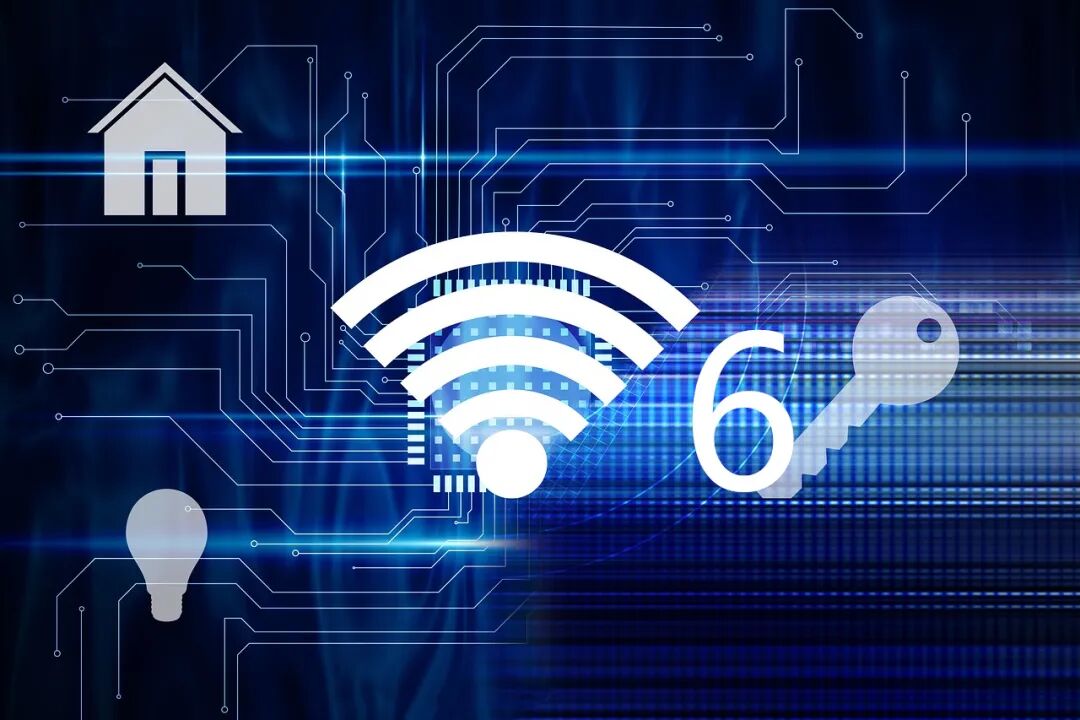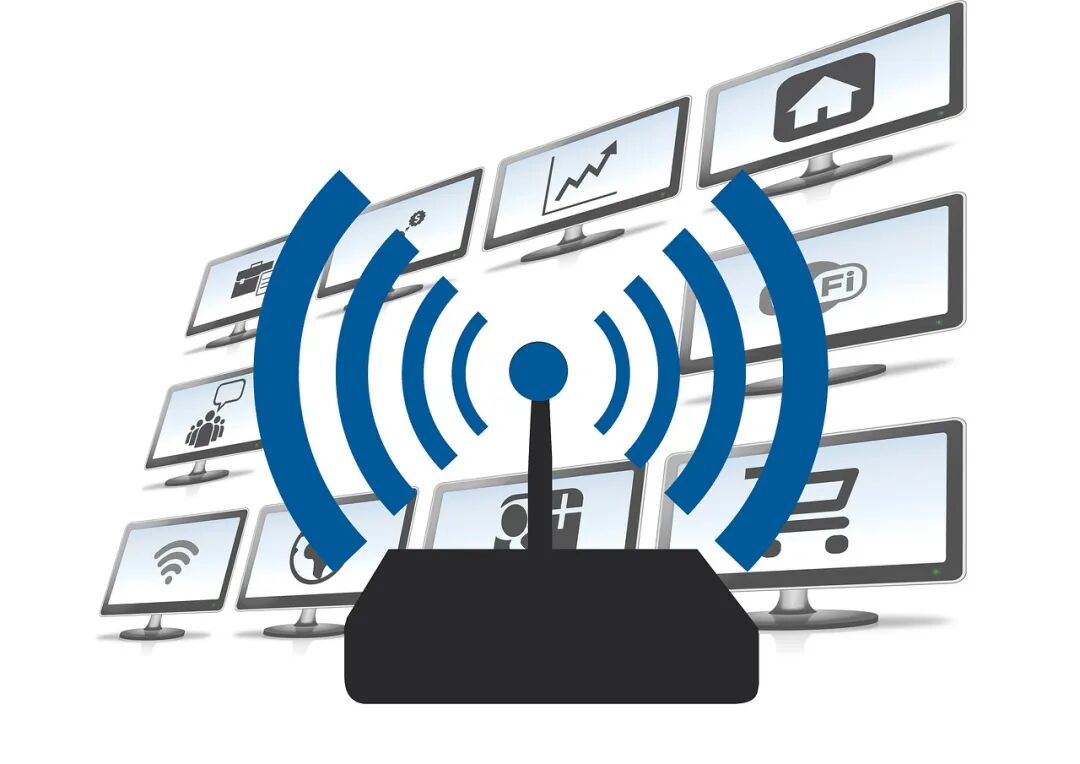As two of the most important connection technologies in the era of the Internet of Everything, Wi-Fi 6 and 5G are both highly anticipated. They both offer ultra-fast speeds, low power consumption, and high bandwidth, driving innovation at the application level. In June last year, the Ministry of Industry and Information Technology officially issued 5G commercial licenses, marking the beginning of the 5G commercial era in China. However, the research and development of 5G, from infrastructure to terminals, as well as ecosystem construction, will take time. In contrast, Wi-Fi 6 can provide high-speed internet as long as Wi-Fi 6 network cards are combined with Wi-Fi 6 compatible routers.

Especially with the ongoing digital transformation in various industries, Wi-Fi 6 has become the “infrastructure” behind the cloudification, intelligence, and IoT of businesses. It is reasonable to believe that 2020 will be the inaugural year for Wi-Fi 6 products. On June 22, Inspur Network launched multiple Wi-Fi 6 AP products and showcased solutions for various scenarios such as healthcare and education. As a “newcomer” in the Chinese networking market, Inspur Network is not falling behind mainstream networking brands in terms of trend judgment and product layout regarding Wi-Fi 6, demonstrating its “mature” approach.  Inaugural Year of Wi-Fi 6 ProductsTo simply understand Wi-Fi 6, it is the abbreviation for the next-generation 802.11ax standard, which first appeared in public in October 2018. At that time, the Wi-Fi Alliance renamed the earlier 802.11n and 802.11ac to Wi-Fi 4 and Wi-Fi 5, respectively, while 802.11ax was renamed to Wi-Fi 6. Wi-Fi 6 is highly anticipated because it increases efficiency, flexibility, and scalability. This performance improvement enhances the speed and capacity of next-generation advanced applications, such as seamless roaming, 4K or 8K video, high-definition collaborative applications, fully wireless offices, and IoT, even in high-density environments.
Inaugural Year of Wi-Fi 6 ProductsTo simply understand Wi-Fi 6, it is the abbreviation for the next-generation 802.11ax standard, which first appeared in public in October 2018. At that time, the Wi-Fi Alliance renamed the earlier 802.11n and 802.11ac to Wi-Fi 4 and Wi-Fi 5, respectively, while 802.11ax was renamed to Wi-Fi 6. Wi-Fi 6 is highly anticipated because it increases efficiency, flexibility, and scalability. This performance improvement enhances the speed and capacity of next-generation advanced applications, such as seamless roaming, 4K or 8K video, high-definition collaborative applications, fully wireless offices, and IoT, even in high-density environments.

In recent years, we have also seen a surge of players in the Wi-Fi 6 market, such as Huawei, H3C, and Ruijie, major competitors in the domestic WLAN market, all of whom have successively launched new Wi-Fi 6 products in recent years, and the explosive growth period that every manufacturer anticipates seems to be just around the corner. According to a report by IDC, since 2019, the growth rate of Wi-Fi 5 has gradually slowed down, while the speed of new product iterations has been rapidly increasing. It is expected that in 2020, Wi-Fi 6 will achieve large-scale deployment, accounting for 24%, with the market size in China approaching $200 million. The market’s activation, accompanied by fierce industry competition, has prompted Inspur Network to make a significant entry into the Wi-Fi 6 market. The newly launched IAP5900 series of sixth-generation wireless products has been specifically designed for many typical Wi-Fi 6 application scenarios. For example, the IAP5920w is more suitable for high-performance, high-concurrency scenarios in hotel rooms, dormitories, wards, and offices; while the IAP5920i is aimed at enterprise-level wireless LAN applications, suitable for wall-mounted, ceiling-mounted, and various installation methods. In fact, Wi-Fi 6 products are not merely an upgrade from Wi-Fi 5, but a fusion of various technologies that can bring a revolutionary experience to large venues, high-density offices, wireless production, smart education, smart media, and the digitalization of cities and enterprises. According to Liu Shaoyang, Director of the Product Department at Inspur Network, “Wi-Fi 5 will still have a product continuity period, and the mainstream in the market for the next 2-3 years may still be Wi-Fi 5 products. However, we have noticed that many new customers are opting for Wi-Fi 6 products, and this trend is becoming increasingly evident. Therefore, for Inspur Network, our product layout will definitely follow a full-scenario approach, whether it is Wi-Fi 5 or Wi-Fi 6, both will be full-scenario.” Compared to Wi-Fi 5, Wi-Fi 6 not only achieves a fourfold increase in network bandwidth, allowing for a fourfold increase in concurrent users, but also reduces network latency from an average of 30ms to 20ms. These tangible performance improvements provide unlimited possibilities for enterprises’ digital business. The year 2020, the inaugural year for Wi-Fi 6 products, will also become a year of acceleration for enterprise digitalization.  Empowering Customers’ Digital TransformationThe Metcalfe’s Law tells us that the value of a network is equal to the square of the number of nodes in that network, and the value of that network is proportional to the square of the number of connected users. Therefore, the more terminals connected to the network, the greater the value of the network.
Empowering Customers’ Digital TransformationThe Metcalfe’s Law tells us that the value of a network is equal to the square of the number of nodes in that network, and the value of that network is proportional to the square of the number of connected users. Therefore, the more terminals connected to the network, the greater the value of the network.

From the information age to the Internet+, and then to the digital age, more and more devices are connecting to the network, generating massive amounts of data. The stability, smoothness, and intelligence of the network are crucial for ensuring that enterprises’ digital transformation is implemented more smoothly and effectively, providing a better experience. In the past, there was a belief in the industry that the arrival of the 5G era would have a significant impact on Wi-Fi networks, as 5G offers transmission speeds comparable to Wi-Fi, along with broader coverage and ease of use. So, will the 5G era affect the market prospects of Wi-Fi 6? In fact, compared to 5G, Wi-Fi 6 is more suitable for internal deployment within enterprises, such as corporate networks and campus networks. From the perspective of 5G, the operation and maintenance are handled by operators, and the data of the enterprise’s internal network will inevitably be exposed to the public network. Wi-Fi 6 is more suitable for supporting enterprise digitalization; its application scenarios are very similar to those of 5G, but it also offers higher security and controllability. For example, hospitals and universities are particularly suitable for Wi-Fi 6 deployment. These two scenarios are also the key industries that Inspur Network is targeting. As an important part of Inspur Network’s “Smart Connection New Network” strategy, based on the capabilities of Wi-Fi 6 products, Inspur Network has launched solutions for smart healthcare and smart campuses. For instance, Inspur Network’s Wi-Fi 6 technology can provide high throughput and low latency networks in dense teaching environments, supporting multiple children in each classroom to learn through VR electronic classrooms, avoiding dizziness and interruptions in teaching caused by bandwidth issues and packet loss. In addition, Inspur Network’s Wi-Fi 6 solutions have already seen successful implementations in the smart healthcare industry. Li Jinguang, Director of the Solutions Department at Inspur Network, stated, “Inspur Network is also continuously exploring new application scenarios, such as new solutions being implemented in Tianjin East Station and the jewelry retail industry.”  “Newcomers” Can Also Be “Experienced”Although Inspur Network is a latecomer in this market, Wi-Fi 6 indeed presents a very good growth opportunity for them.
“Newcomers” Can Also Be “Experienced”Although Inspur Network is a latecomer in this market, Wi-Fi 6 indeed presents a very good growth opportunity for them.

First, from the user’s perspective, Wi-Fi 5 products are still the mainstream in the market. Replacing a mature Wi-Fi 5 solution is not easy, while new customers are more inclined to choose Wi-Fi 6. At the same time, this is a newly emerging market, and Inspur Network does not have too much historical baggage, allowing for a more focused strategy and product approach. “We are more willing to listen to users’ voices and do more integration in how to relate to business and help users upgrade their business,” said Li Jinguang. Secondly, wireless network deployment is a process that tests deployment and continuous optimization. As a newcomer in the market, Inspur Network not only has a strong learning ability but also provides close service to users. It can be said that for every future customer, Inspur Network is striving to make them a benchmark in the industry. Thirdly, Inspur Network is also continuously pursuing breakthroughs in more application scenarios. For example, in production workshops, Inspur Network meets the needs of high-speed moving AGV carts operating 24/7 through seamless roaming technology, providing a Wi-Fi network with millisecond-level latency and zero packet loss to support uninterrupted production operations, pushing industrial production from traditional labor-intensive processes to automation, and from fixed production processes to flexible manufacturing. In terms of products, Inspur Network will take a personalized approach, allowing each product and scenario to be customized to ensure user comfort. Although Inspur Network is a newcomer in the market, it has already formed a strong market competitiveness through product innovation and the accumulation of industry users. This capability has now extended to Inspur Network’s new Wi-Fi 6 products, making the “newcomer” dance of Inspur Network much more “experienced”.